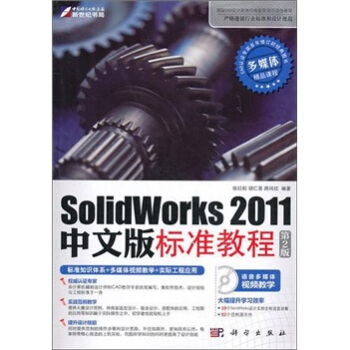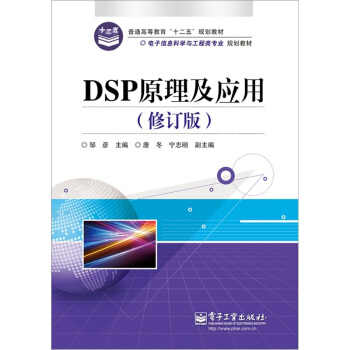![Python入門(影印版 英文版) [Introducing Python]](https://pic.qciss.net/11789223/5631f227Ne04de7f7.jpg)

齣版社: 東南大學齣版社
ISBN:9787564159139
版次:1
商品編碼:11789223
包裝:平裝
外文名稱:Introducing Python
開本:16開
齣版時間:2015-09-01
用紙:膠版紙
頁數:454
字數:588000
正文語種:英文
具體描述
內容簡介
《Python入門(影印版 英文版)》容易理解而且讀起來幽默風趣,對於編程初學者和Python語言新手而言是理想的書籍。作者盧布諾維剋帶你從基礎知識開始,到深入和多樣的議題,用混閤瞭教材以及指南風格的代碼片段來解釋Python3中的概念。《Python入門(影印版 英文版)》章節末尾還有練習題幫助你練習剛剛學過的內容。
你將為這門語言打下堅實的基礎,包括測試、調試、代碼復用和其他開發技巧的實踐。
《Python入門(影印版 英文版)》將嚮你展示如何通過各種工具和開源代碼包,將Python應用於商業、科學和藝術等領域中。
目錄
Preface1. ATaste of Py
Python in the Real World
Python versus Language X
So, Why Python?
When Not to Use Python
Python 2 versus Python 3
Installing Python
Running Python
Using the Interactive Interpreter
Use Python Files
What's Next?
Your Moment of Zen
Things to Do
2. Py Ingredients: Numbers, Strings, and Variables
Variables, Names, and Objects
Numbers
Integers
Precedence
Bases
Type Conversions
How Big Is an int?
Floats
Math Functions
Strings
Create with Quotes
Convert Data Types by Using str()
Escape with
Combine with +
Duplicate with *
Extract a Character with []
Slice with [ start : end : step ]
Get Length with len0
Split with split()
Combine with join()
Playing with Strings
Case and Alignment
Substitute with replace()
More String Things
Things to Do
3. Py Filling: Lists, Tuples, Dictionaries, and Sets
Lists and Tuples
Lists
Create with [] or list()
Convert Other Data Types to Lists with list()
Get an Item by Using [ offset ]
Lists of Lists
Change an Item by [ offset ]
Get a Slice to Extract Items by Offset Range
Add an Item to the End with append()
Combine Lists by Using extend() or +=
Add an Item by Offset with insert()
Delete an Item by Offset with del
Delete an Item by Value with remove()
Get an Item by Offset and Delete It by Using pop()
Find an Item's Offset by Value with index()
Test for a Value with in
Count Occurrences of a Value by Using count()
Convert to a String with join()
Reorder Items with sort()
Get Length by Using len()
Assign with =, Copy with copy()
Tuples
Create a Tuple by Using 0
Tuples versus Lists
Dictionaries
Create with {}
Convert by Using dict()
4. Py Crust: Code Structures
5. Py Boxes: Modules, Packages, and Programs
6. Oh Oh: Objects and Classes
7. Mangle Data Like a Pro
8. Data Has to Go Somewhere
9. The Web, Untangled
10. Systems
11. Concurrency and Networks
12. Be a Pythonista
A. PyArt
B. Pyat Work
C. PySci
D. Install Python 3
E. Answers to Exercises
F. Cheat Sheets
Index
精彩書摘
《Python入門(影印版 英文版)》:That initial blank output line is the empty string'', which stands for the current directory.If '' is First in sys .path, Python looks in the current directory first when you try to import something: import report looks for report.py.
The first match willbe used.This means that ifyou define a module named random and it's in the search path before the standard library, you won't be able to access the standard library's random now.
Packages
We went from single lines of code, to multiline functions, to standalone programs, to multiple modulesin the same directory To allow Python applications to scale even more, you can organize modules into file hierarchies called packages.
Maybe we want different types of text forecasts: one for the next day and one for the next week.One way to structure this is to make a directory named sources, and create two modules within it: daily.py and weekly.py.Each has a function called forecast.The daily version returns a string, and the weekly version returns a list of seven strings.Here's the main program and the two modules.(The enuvierate() function takes apart alist and feeds each item of the list to the for loop, adding a number to each item as a liffle bonus.).
……
前言/序言
用戶評價
評分
好書
評分G ooooooooooooo d ......
評分gooooooooooooood .......
評分很好,價格小貴,希望便宜些,支持更多英文影印書。
評分知道你們想用我們用戶的評價文本數據做sentiment analysis,我偏偏寫個異常數據,看你們的算法能識彆不?
評分紙張上乘,印刷很好,包裝很好,快遞速度很快,第二天就到瞭
評分很好的計算機書籍,看瞭很有收獲!
評分進一步提高python的好書,讀起來就放不下瞭。好書。
評分好書
相關圖書
本站所有內容均為互聯網搜尋引擎提供的公開搜索信息,本站不存儲任何數據與內容,任何內容與數據均與本站無關,如有需要請聯繫相關搜索引擎包括但不限於百度,google,bing,sogou 等
© 2025 book.qciss.net All Rights Reserved. 圖書大百科 版權所有




















![次世代遊戲機械及場景製作(附光盤) [The Game Art Factory] pdf epub mobi 电子书 下载](https://pic.qciss.net/11764413/55ee2a4cNc6a21fd2.jpg)